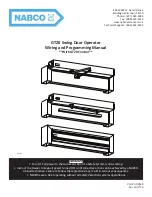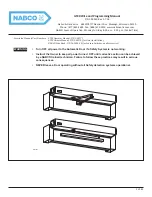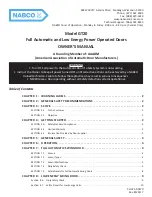
85
GB/MT
Initial Use
protection
6
turns off, the unit is ready to use
once more.
Welding helmet
HEALTH HAZARD!
If you
do not use the welding helmet, harmful UV rays
and heat emitting from the arc can damage your
eyesight.
Always use the welding helmet when you weld.
Welding
RISK OF BURNS!
Hot,
welded work pieces are very hot, meaning that you
can burn yourselves on them.
Always use a pliers to move hot, welded work
pieces.
After you have connected the welding
unit to the electricity supply, proceed as
follows:
Connect the earth cable with the earth terminal
4
to the work piece to be welded.
Ensure that good electrical contact exists.
The workpiece should be free of rust and paint
on the area to be welded.
Select the desired welding current and the wire
feeder depending on welding wire diameter,
material thickness and desired weld penetra-
tion depth.
Switch on the unit.
Hold the welding helmet
20
in front of your
face and lead the burner nozzle
7
along the
area of the work piece to be welded.
Press the burner button
12
to generate an arc.
When the arc burns, the unit feeds wire into the
weld pool.
If the welding spot is big enough, the burner
11
is slowly led along the desired edge.
The gap between the burner nozzle and work
piece should be as small as possible (in any
case, no more than 10 mm).
If necessary, oscillate it gently to enlarge the
weld pool somewhat. For those who are less
experienced, it can be difficult to form a decent
arc i.e. the correct setting for the welding current
and wire feeder speed.
You can figure out the best welding current and
wire feeder speed settings by practicing on a
test piece. A well-adjusted arc has a soft, steady
humming sound.
The weld penetration depth should be as deep
as possible, however, the weld pool should not
fall through the work piece.
In the case of rough or harsh rattling, decrease
the wire feeder speed or switch to a higher
power setting (increase welding current).
If the wire feeder speed is too high and / or the
welding current is too low, the welding wire
may not melt properly and may dip into the
welding seam and into the work piece.
A quiet, dull sound with a flickering arc indicates
too low a wire feed.
Increase the wire feeder speed or switch to a
lower welding current.
The wire melts even before it has reached the
welding seam with a welding current that is too
high. The result is that drops form on the welding
wire, as well as spraying and an inconsistent
arc.
The slag may only be removed from the seam
when it has cooled down.
To continue the welding process on an inter-
rupted seam:
Firstly, remove the slag from the point of attach-
ment.
Ignite the arc in the weld groove, lead it to the
connection point, properly melt the material
there and then continue along the welding
seam.
CAUTION!
Ensure that the burner is always
put down on an insulated surface after welding.
Always switch the welding unit after finishing
welding work and during breaks, and always
pull the mains plug out of the socket.
291492_Fuelldraht-Schweißgeraet PFDS 33 B2_content_IT_PT.indd 63
27.03.17 14:01
Содержание 300595
Страница 3: ......
Страница 4: ...A1 B A2 24 23 16 22 20 21 30 33 29 28 27 ...
Страница 26: ...26 ...
Страница 70: ...70 291492_Fuelldraht Schweißgeraet PFDS 33 B2_content_IT_PT indd 48 27 03 17 14 01 ...
Страница 90: ...90 291492_Fuelldraht Schweißgeraet PFDS 33 B2_content_IT_PT indd 68 27 03 17 14 01 ...
Страница 112: ...112 ...
















































